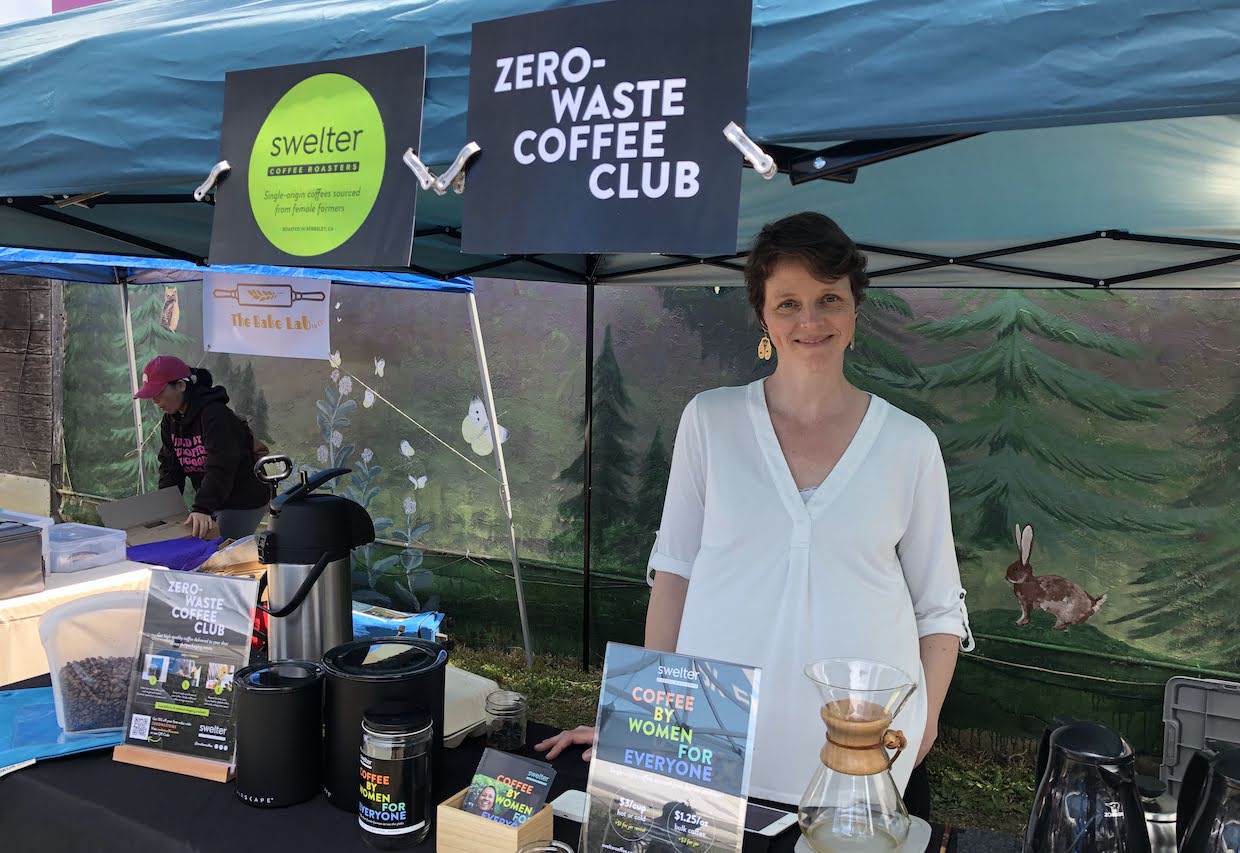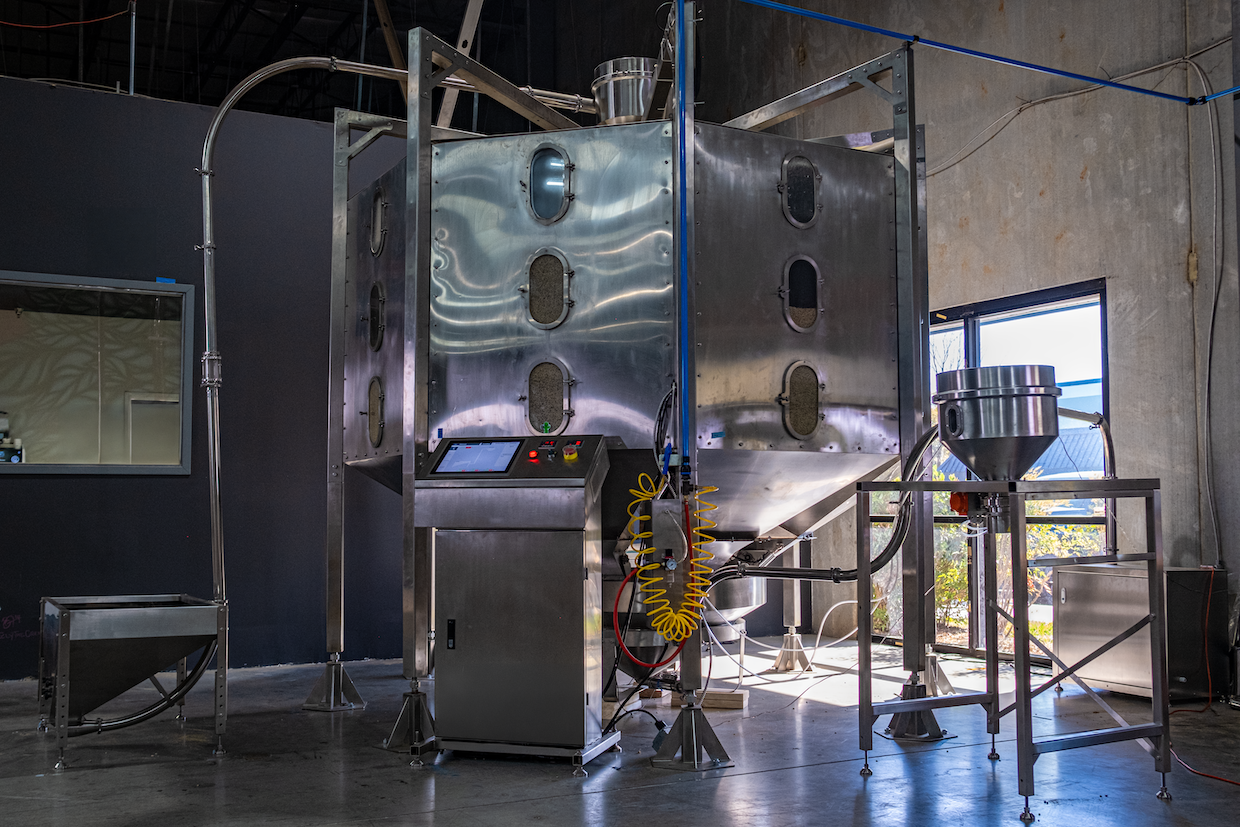Permaculture, organic, and regenerative farming are not new concepts for many coffee producers, but they have recently become more prominent in consumer marketing. The growing demand for “sustainable” coffee, as well as the increasing need to safeguard the supply chain against the threat of climate change, means more brands are using these terms, printing them on packaging and including them in marketing materials.
Without clarification and transparency, it can be easy to conflate these concepts, especially for consumers. Among the many issues this confusion can cause, greenwashing is one of the most prominent, harming brand loyalty and reputation.
To better understand these terms, I spoke to Kyle Freund, Senior Communications Manager at Solidaridad North America, Cris Salazar, co-founder of Santuario Ecológico Monteverde, Diego Robelo, General Manager of Aquiares Estate Coffee, Ted Stachura, Director of Coffee at Equator Coffees, and Marcel Binley, Managing Director at Bella Barista.
You may also like our article on why soil health and regenerative agriculture are the latest trends in third wave coffee.


Breaking down the terms
Although there are key differences between regenerative, permaculture, and organic farming, they share some commonalities. A fundamental shared trait of these approaches is their roots in indigenous knowledge.
Indigenous agricultural knowledge (or IAK) is a cornerstone of sustainable food supply chains, with many coffee producers implementing indigenous farming techniques like intercropping, terracing, and agroforestry to reduce the environmental impact of their coffee production.
“There are a variety of approaches, nuances, and definitions, so it’s really easy to get into the weeds,” says Kyle Freund, Senior Communications Manager at Solidaridad North America, an international organisation that works to improve sustainable practices in supply chains, including coffee. “Permaculture, agroecology, organic, biodynamic, regenerative, shade-grown: they all share common traits and differences, but they’re all intended to improve the agricultural sector.”
Permaculture
Perhaps the lesser-known of the three terms, permaculture is a sustainable farming approach that utilises a closed-loop system to manage waste and bolster the health of ecosystems. Bill Mollison and David Holmgren coined the term “permaculture” (from “permanent agriculture”) in the 1970s, but the practices existed long before as an indigenous philosophy of living in observation and imitation of nature. Indigenous farmers mimicked the conditions of their farming environment in order to live in harmony with it, thereby improving productivity and conserving ecosystems.
Permaculture uses methods such as cover cropping, crop diversification and rotation, no-till soil management, and organic inputs such as compost. Permaculture coffee is often farmed in agroforestry systems, which help farmers adapt to climate change through natural pest and disease control, conservation of natural resources, and plant and land buffers against extreme weather.
Along with his sister Andrea Huerta, Cris Salazar runs Santuario Ecológico Monteverde in Costa Rica – a Blue Flag-certified permaculture education hub and coffee farm. The sanctuary uses and showcases ancestral agricultural methods, including biochar, soil erosion prevention through terracing, and the Three Sisters intercropping system.
He highlights that while permaculture systems are usually organic, farms need to be certified if they want to use the term legitimately in their marketing and branding.
Organic farming
Arguably the most recognisable term for consumers, “organic” farming is heavily associated with certification standards. “Organic certifications are highly recognised and standardised, so customers are likely to know what it means if they’re willing to dig into the details,” Kyle says.
To certify as organic, farmers must use no synthetic inputs, such as chemical pesticides, fertilisers, and antibiotics. Producers also need to grow coffee and other crops on farmland that has been free from prohibited chemical inputs for a number of years (typically three or more).
Organic farming techniques include growing coffee under shade, intercropping, and environmentally friendly waste management. These techniques support biodiversity rather than prioritising higher crop yields over environmental health.
Many organic certifications are regulated by governments such as the US, Canada, the EU, Japan, Argentina, Australia, France, Kenya, and Ukraine.
As consumer interest in health and environmental awareness grew in the early 2010s, organic certifications became an increasingly important part of third wave coffee. In 2021, the global organic market was worth US $133 billion, growing by 24.6% within the same year.
Regenerative agriculture
Similar to permaculture, although the term “regenerative agriculture” has recently appeared on a range of products, the concept is not new. Coined by the Rodale Institute in the 1980s, indigenous communities have long practised regenerative farming.
Key elements include prioritising soil health and using climate-smart methods to sequester carbon, improve productivity, and foster healthy farming communities.
Over the last few years, as governments and agencies strive to reduce carbon emissions, investment in certification schemes has increased significantly, most notably the Regenerative Organic Certified scheme developed by the Regenerative Organic Alliance. This uses the USDA Organic standard as a baseline and adds criteria for soil health and land management, animal welfare, and farmer and worker fairness.
These certifications, however, have proven controversial. With no universally agreed definition, a number of organisations are effectively defining regenerative agriculture themselves.
Moreover, because regenerative practices are adaptable to many different contexts and commodities, the definition is open to wide interpretation that can confuse customers. For example, it’s useful for consumers to know the differences between labels like ROC, RegenAgri, and Regenified because the former prohibits synthetic inputs and tilling, while the latter two definitions allow some degree of both.
Diego Robelo is the General Manager at Aquiares Estate Coffee, a Rainforest Alliance-certified and carbon-negative coffee farm in Costa Rica. He says coffee farms can technically be regenerative without certification, mainly because environmental conditions and ecosystems vary widely across different coffee farms, meaning they require different types of input.
Additionally, he tells me that farms can be considered regenerative if they aren’t certified organic.


Why are organic and regenerative coffee becoming more popular?
Marcel Binley is the Managing Director at Bella Barista, an organic roaster and the first ROC coffee company in the UK. He says the boom in consumer interest in organic coffee has helped push demand for other sustainable coffees.
“Consumers all over the world want to know more about the coffee they’re drinking, where it comes from, and whether it’s sustainable,” he tells me.
At the other end of the supply chain, however, regenerative practices have been implemented for centuries to safeguard future production.
“As the number of people drinking coffee increases, we should be striving for higher productivity,” Diego says. “If even one acre of coffee plants aren’t yielding adequate levels, it can cause a lot of problems for farms.”
But achieving certified status can be challenging and is dependent on a number of factors. Diego tells me that while Aquiares transitioned from an intensive, full-sun coffee farm to an agroforestry system and collaborated with researchers to build a carbon monitoring station on the estate, organic certification isn’t yet possible given its size.
Over the last few years, companies and large investment funds have started backing the regenerative movement as they recognise the major role that agriculture plays in climate change. Production systems with woody crops, such as coffee, can act as either a carbon source or sink, thus either exacerbating climate change or helping mitigate it. Ecological coffee farms have been found to have higher carbon storage and lower carbon footprints than conventional ones.
Regenerative practices are also gaining popularity among farmers for their ability to increase farm yields and lower costs. Healthier soils and ecological pest and disease control can reduce dependence on chemical inputs like pesticides, herbicides, fungicides, and fertilisers, thereby reducing overhead costs.
Moreover, Marcel adds that certified regenerative coffee can fetch higher prices because the beans contain higher levels of nutrients and antioxidants that can improve flavour profile and potentially cup scores.


Why we need to understand these terms as distinct
Ted Stachura is the Director of Coffee at Equator Coffees, one of the first US roasters to sell ROC coffee in 2022. He says Equator has seen an increase in demand for ROC coffee, primarily from food service, wholesale, and grocery retailers.
“Generally, from a consumer perspective, regenerative coffee isn’t fully understood yet, although we have seen an increase in awareness.”
A growing number of consumers want to know more about the farmers producing their coffee. For North American consumers, this curiosity is driven mostly by concerns about reducing chemical inputs for health and sustainability reasons, according to a 2023 Fairtrade Consumer insights report.
“The decision to buy organic might be geared more towards the perception of health benefits rather than its positive impact on the environment,” Diego says, emphasising that a more holistic approach to sustainable purchasing behaviour can have a positive impact on farming communities.
“I believe when it comes to sustainability, there’s no more important aspect than traceability,” he adds.
While the strict and well-defined organic certification eliminates some guesswork for consumers, regenerative certifications have vastly different requirements, and permaculture has no certification scheme. Additionally, a bag of coffee labelled “permaculture” or “ROC” may mean it is also organic, but “organic” doesn’t imply permaculture or regenerative.
According to Ted, consumers are typically willing to pay more for certified organic and regenerative coffee. Despite the murky definitions, seeing a trusted label like ROC on a coffee bag gives consumers more assurance that it was produced responsibly.
“Whether it’s understood or not by the consumer, there are some good feelings that are equated with having that kind of additional certification on top of the organic label,” Ted says.
Roasters should consider that “permaculture” is less understood by consumers and, therefore, less marketable, whereas organic and regenerative can be useful selling points.
“Being the first in the UK to sell ROC coffee, it gives us a big point of difference compared to our competitors,” Marcel says.
Retaining more value
These labelling systems confuse not only consumers but also roasters and producers. Confusion and disagreement about agricultural terms can affect the prices farmers receive, underscored by the importance of clear definitions and transparent trade.
Understanding agricultural terminology is critical for coffee producers to restore ecosystem productivity, adapt to climate uncertainty, and safeguard their livelihoods. A strong grasp of the definitions of organic and regenerative is critical for producers to comply with certification criteria and equally for uncertified farms that already practice or are transitioning to organic or regenerative farming.
This knowledge allows producers to self-advocate for fair compensation amid rising market demand. Roasters can help producers capitalise on this differentiation. For example, Marcel worked with Henrique Sloper at Camocim Organic to implement the ROC process. Ted, meanwhile, recently helped one of Equator’s producer partners become the first ROC co-op in Peru. He says this gave its producers – who were previously unaware of the certification – a huge advantage in the global market.


While there is some crossover between the concepts of regenerative agriculture, organic farming, and permaculture, the differences are subtle, which makes it all the more important to understand them.
By doing so, these terms and practices can add as much value to the industry as possible – ensuring producers are fairly compensated, and companies can establish trust with consumers.
Enjoyed this? Then read our article on why succession and heritage are key to organic and regenerative coffee production.
Perfect Daily Grind
Want to read more articles like this? Sign up for our newsletter!











